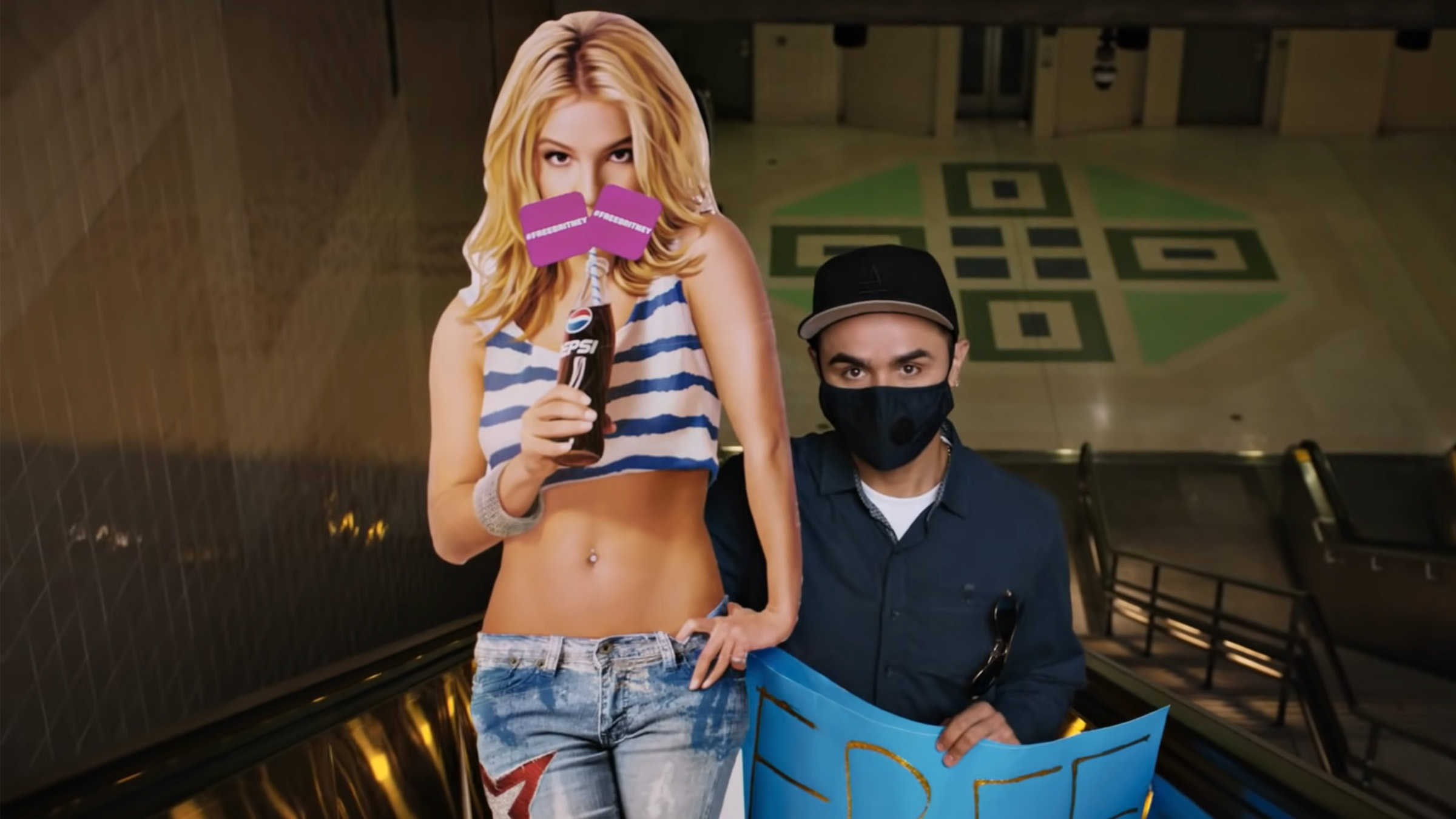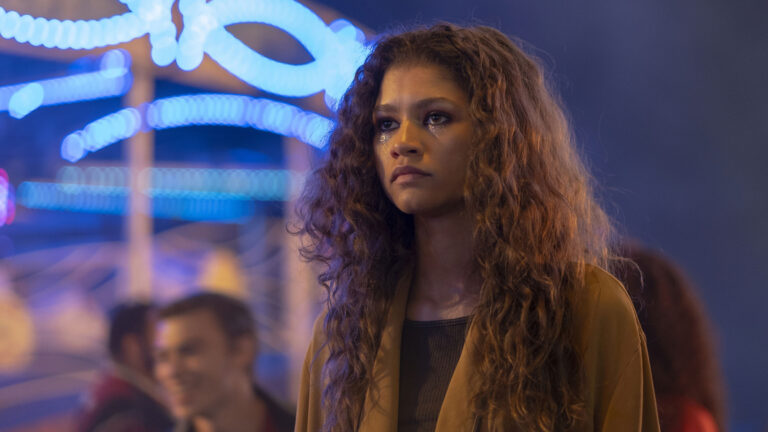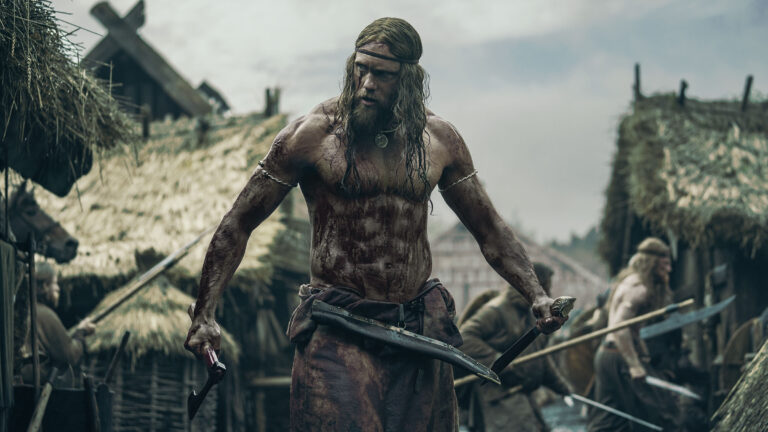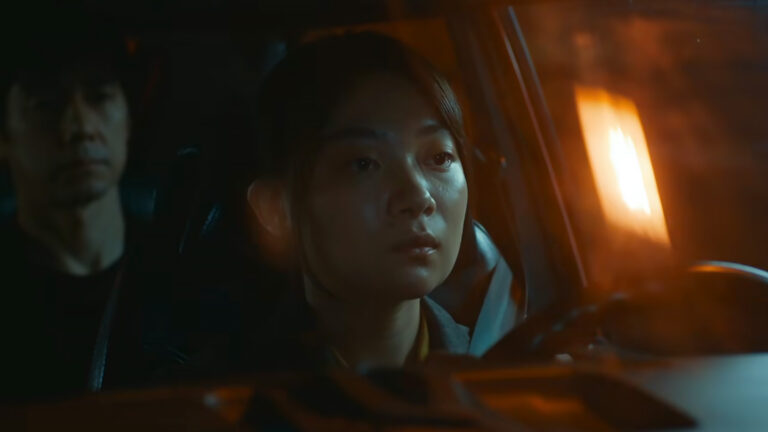Today we’re speaking with Geoff O’Brien and Pierre Takal who were nominated for a primetime Emmy for outstanding picture editing for a non-fiction program for the New York Times Presents documentary Framing Britney Spears.
Geoff’s career has spanned more than 20 years; last year, he won an Emmy for news and documentary for his work on the series, The Weekly. He also cut three other documentaries in the New York Times Present series as well as shows for Frontline, VH1, and Showtime.
Pierre won not one, not two, but three Emmys for news and documentary programs last year and, showing some range, was nominated for a Golden Reel Award for Motion Picture Sound Editors and has been nominated for Emmys going back 20 years.
He’s also cut three other documentaries in the New York Times Presents series. He edited Supersize Me 2, the sequel to the blockbuster documentary, and he’s cut for Frontline, so we’re talking with two guys with some serious doc chops.
Listen while you read…
HULLFISH: The first time Britney’s voice is heard, it is over flowers and roses. Was there some kind of a theme? And what was the theme for?
O’BRIEN: The theme was derived by our director, Sam Stark. Honestly, I think that her favorite flower was the rose, and so she was using that as a motif; and when putting it together, we wanted to bring Britney’s voice in, but not until we get into the chaos of all the different visuals that we’ll be seeing later.
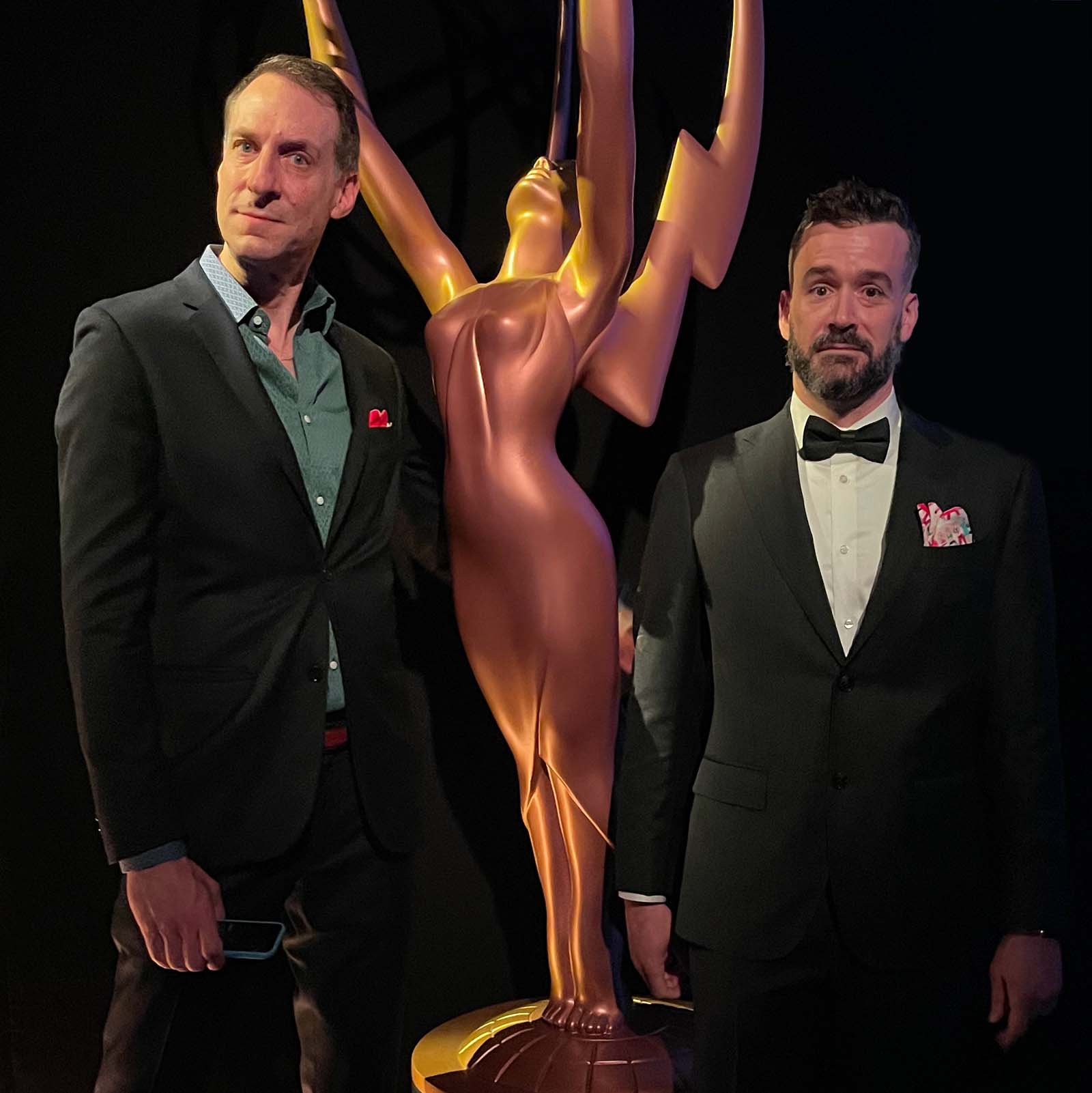
HULLFISH: When you start watching footage, you don’t know what relevance it’s going to have, what the context is going to have. So how do you organize things when you don’t know what your story is yet?
TAKAL: I think it’s a familiar feeling. It’s a feeling of being overwhelmed. You’d feel panicked if you hadn’t felt it repeatedly on every project, and it’s a little bit like putting a puzzle together when you find two pieces that connect.
It’s a feeling of being overwhelmed. You’d feel panicked if you hadn’t felt it repeatedly on every project.
You always want to keep in mind that you’re telling a story, the large story helps as a guide, and then you find little pieces that connect. We are working together with directors and producers who also have input. As soon as you put something together, you have something to react to, and the fact you can react to something really is your guide.
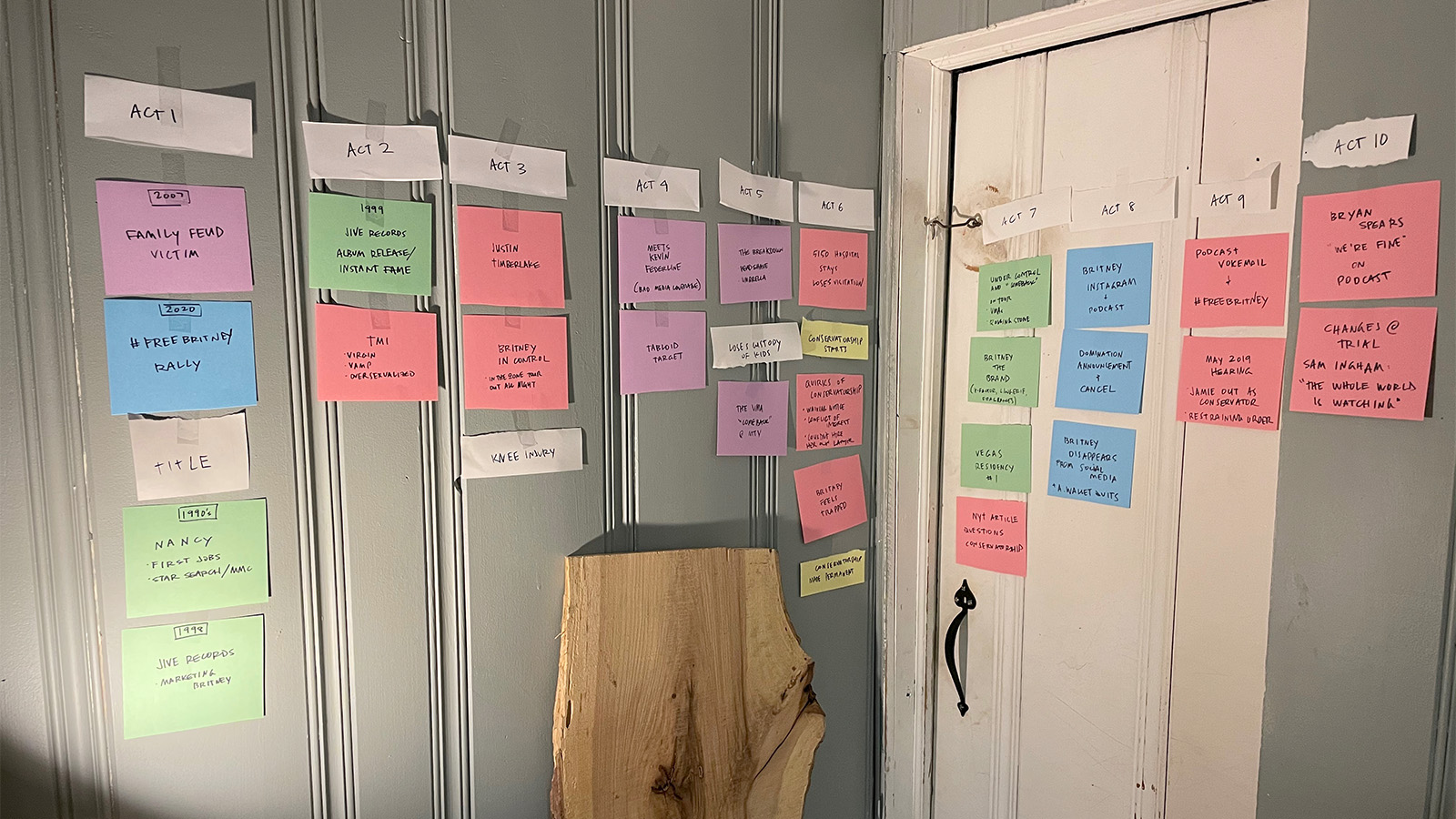
It’s like merging to get into the Lincoln Tunnel. It feels overwhelming when you’re looking at the cars and all the brake lights, but if you just follow that car in front of you, you’ll make it through.
O’BRIEN: That’s good because that’s what we did. We didn’t know exactly what the story was or how we were going to hone in on the story. From the very beginning, it was a bit of a kitchen sink. We took everything, looked at it all, and had to watch a three-and-a-half-hour cut. Only then did we start to connect the dots and think, “Oh, we actually can put these two things together.” Organizing her life chronologically made sense at first, but then it started to make more sense to organize it thematically.
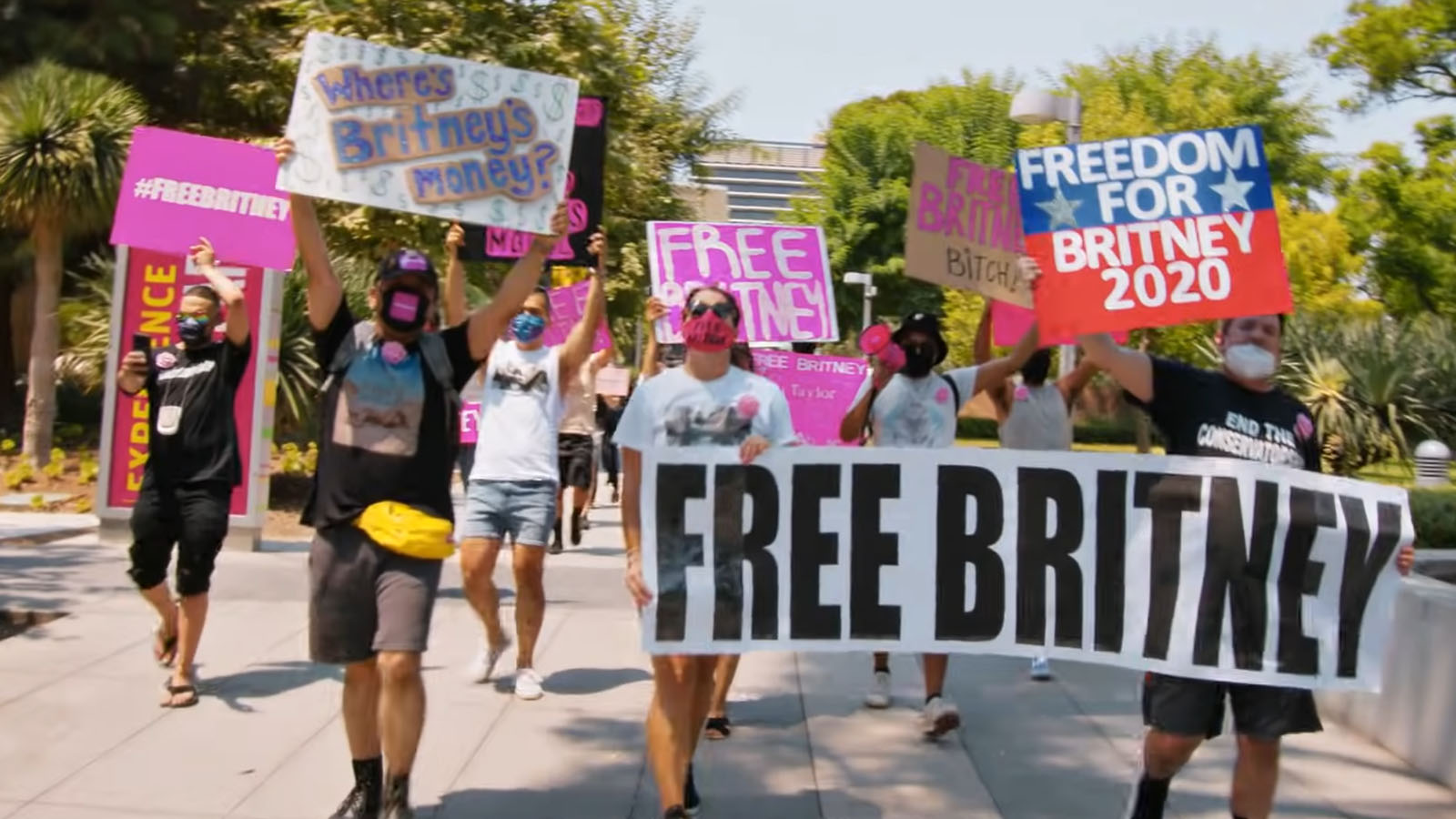
HULLFISH: Was that first three-and-a-half hour cut mostly chronological, and then you realized other ways to organize it?
O’BRIEN: Yeah, and in the end, it mainly remained chronological—outside of bouncing back and forth to 2020 of the conservatorship trials—because I was just coming off of having just seen the Michael Jordan documentary series The Last Dance, in which they go back and forth a lot.
A lot of this stuff is trial and error, and you just keep trying stuff.
I liked that a lot, so I wanted to do something like it, so we were playing with it, and it just didn’t work for this. A lot of this stuff is trial and error, and you just keep trying stuff. Ultimately we found that chronological is what made the most sense for this.
HULLFISH: Talk to me about the decision making process of not exploring particular avenues or rabbit holes or avoiding particular story arcs.
TAKAL: It became increasingly clear that the story was about the conservatorship and what led to it. It was also about trying to explain what a conservatorship is, and if you try to explain it through other people and stating facts, people really wouldn’t be very interested. But if we picked the parts of her story to make you understand the significance of a conservatorship, that helped to sift a lot of the tempting (but not relevant) parts of her story out.
O’BRIEN: There was an effort to try and stay away from the things that people had seen a thousand times. So it was a big effort on our part to try and find stuff that was lesser-known, or there was a longer version of it. We’d all seen the photographs of her shaving her head and the salon, but what I had never seen was her driving around to a few different salons, too. And then afterward, we were going to get the tattoo and the context that it all brought. It was interesting watching all that play out on a longer timeline.
There was an effort to try and stay away from the things that people had seen a thousand times.
TAKAL: That’s why it resonated so much with so many people because a lot of that footage was familiar, and it was reframed in a way where it held a mirror up to a recent past that everybody knew. It coaxed a reflection about the kind of person I am. If I’m laughing at her because she shaved her head, now I understand. She has kids, she can’t see her kids, and she’s being forced to perform. All of these parts are lost a little bit when you’re watching it on TV and seeing it in the tabloids.
Brittany Spears was 25 when she shaved her entire head…. i get it now
— E. (@ElisaLissette_) September 11, 2019
O’BRIEN: I think about the sequence with the umbrella incident, which everybody knows from the cover of the magazines. She’s coming at the camera guy but what we show in the film here is that he had been following her around all night long back and forth to her ex-husband’s house so she could see her kids. By the time they get to the gas station, it’s understandable why she’s saying, “Stop following me.” I would probably do the same thing.
HULLFISH: One of my questions was about the music choice at the beginning. And I’ve since learned Pierre that you are a composer.
TAKAL: That’s my passion. I think it’s what I’ve always loved to do.
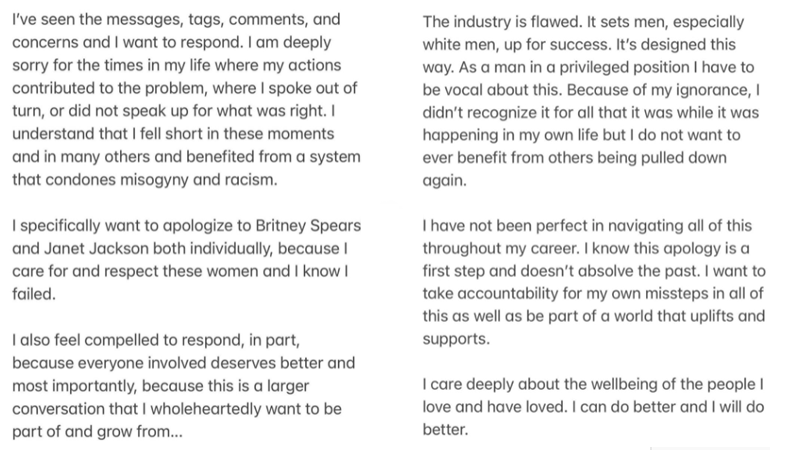
HULLFISH: Talk to me about the music choices at the very beginning of the documentary. Is that something you composed?
O’BRIEN: The music was composed by Pierre and another gentleman named John E. Low, who wrote the cue in the beginning. He didn’t necessarily write to picture, but he was watching some of my rough cuts, and the motif that we had come up with was this idea of an old music box, like a ballerina music box—using that as a central tone, a sort of breaking down and deconstruction of it. That was the overarching tone of the whole thing that we were trying to go for.
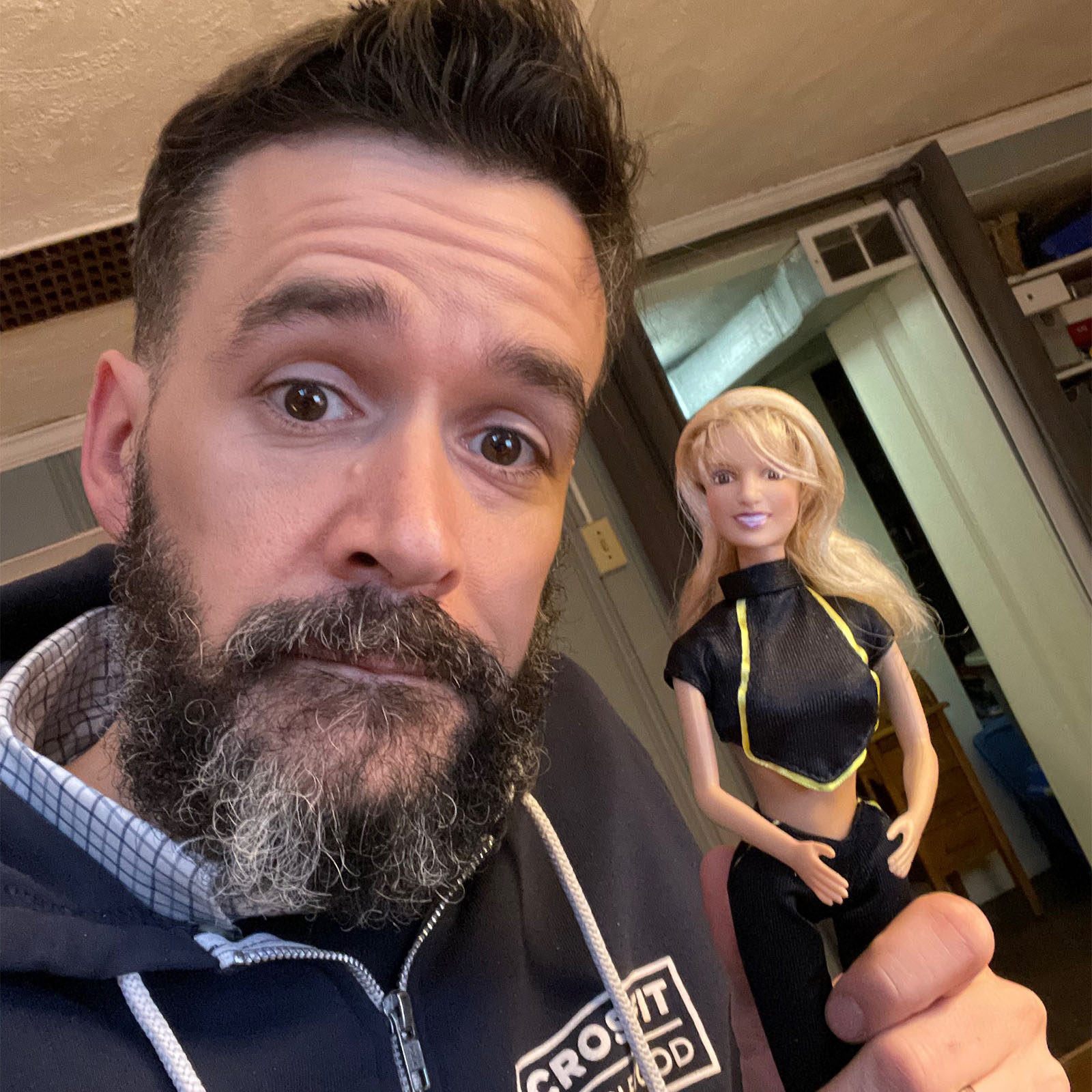
TAKAL: Yeah, I was additionally adding tracks to punctuate the score that was very atmospheric. Officially, I would not want to be credited with being a composer on this, but I jump on any opportunity to score something and even throw in extra tracks.
O’BRIEN: Even in the paparazzi sections where the tension is rising, we had to amp up that ballerina music box. That’s where Pierre’s cues really took it over.
#FramingBritneySpears director on Spears' testimony: "Imagine saying that you feel like you’re being abused or that you were forced into a facility & the court doesn’t change anything. To come back 2 years later and say it again must take a lot of guts" https://t.co/iGXeN1g41u
— Variety (@Variety) September 26, 2021
HULLFISH: There is an early sound bite in front of a courthouse that takes us to a transition that uses reverb. What’s the value of adding something like that?
O’BRIEN: That’s something I stole from Pierre as far as a technique and building audio textures and building different layers within the audio. In that particular moment you’re talking about, we are throwing back in time a little bit. It’s going from “here we are in front of this courthouse in 2020, but we need to go back to the beginning and throw to Mississippi.” We’re going to throw to an old childhood. So there is a reverb to bleed us in and take us across that timeline.
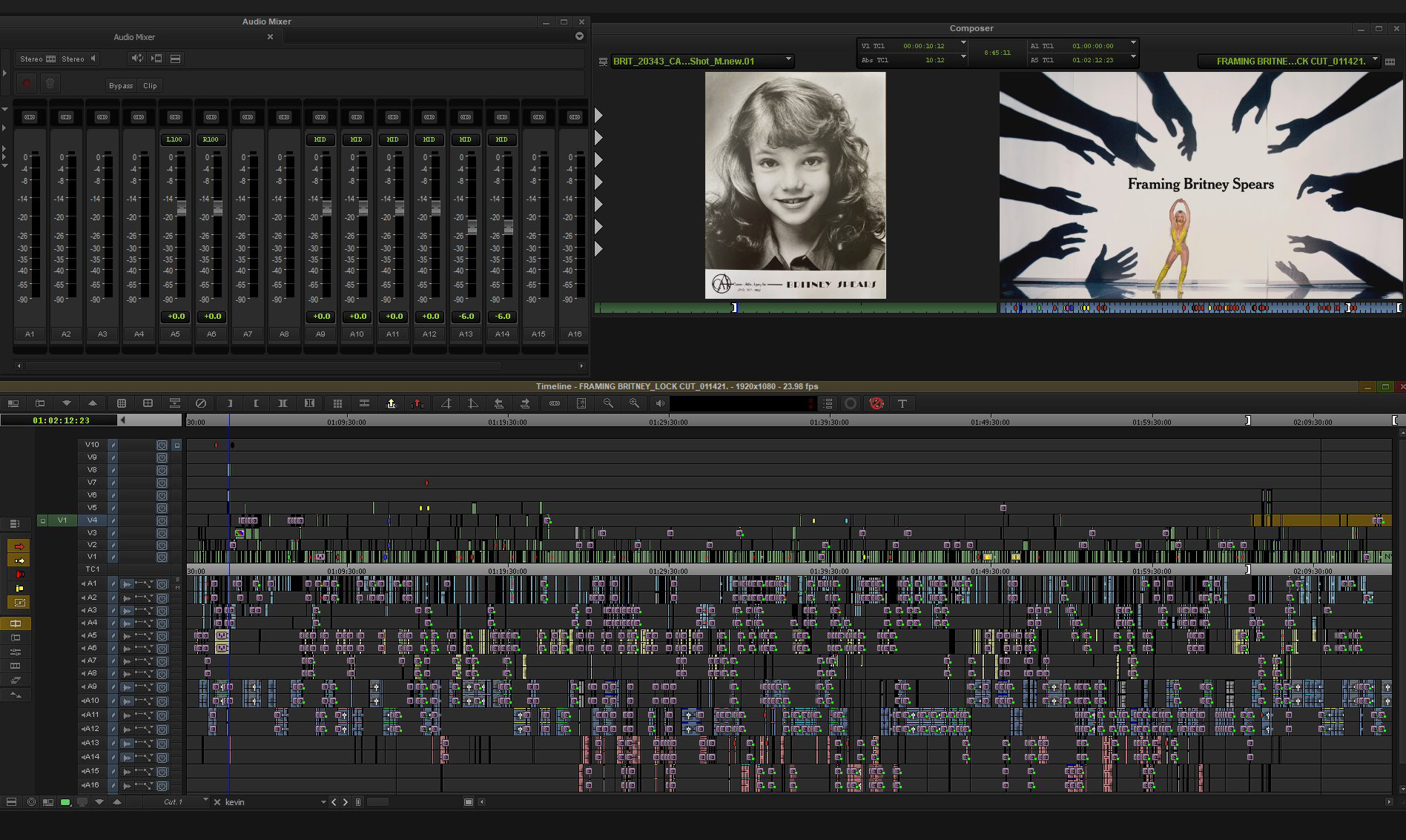
TAKAL: I think it’s interesting because when you’re cutting news, you have to adhere to very strict editorial rules. They’re not even guidelines. You have to always have things in context, and when you’re doing what we call news pops or news sound ups, that’s when you use audio from a newscast to try to reinforce an idea or illustrate an idea, even Britney’s voice, in this case, you have to make sure that people understand that it’s a part of a longer sentence and that you’re not just taking out of context and something that could be perceived as manipulative.That’s also the reason why, in some cases, you fade out with reverb, and in this case, the thing that I used was, as soon as you’re done with a bite, you make an edit, and you muffle the sound a little as you faded out, you always give the impression that its part of a greater sentence or thought.
HULLFISH: Talk to me about the decision to not let the audience have the complete context right away and know that you will give it to them in a more interesting way later.
O’BRIEN: I think about it in the same way I think about a television show or a film with a cold open. We had a very limited amount of vérité footage, and I wanted to make sure that when we did use it, it was used in a very interesting way. So to come in cold and just listening to someone go through fan letters and pointing out the records on the wall was a fun way to get into it.
We had a very limited amount of vérité footage, and I wanted to make sure that when we did use it, it was used in a very interesting way.
HULLFISH: There is a marketing executive from Jive records who has one single memory that she shares about Britney’s dad. She says, “…and that’s all I’m going to say about Jamie”. And then you just sat with her looking at the camera. You could have cut away from it as soon as she said it, but you didn’t. Tell me what it says that you just stayed with her.
O’BRIEN: I can tell she’s replaying that conversation in her head and still stewing about it and still mad about it, and that pause lets you see her true sort of emotion.
HULLFISH: I’m really interested in this idea that this was a piece by the New York Times or through the New York Times media department. What were the difficulties or advantages of working with them? Were the people more writers, or were they used to dealing with more visual media?
O’BRIEN: We had also done another series with them called The Weekly leading up to this, which was 30 episodes of television. This was the sixth episode of the New York Times Presents, so the people that we are working with at the New York Times were familiar with the documentary-making process.
There’s a lot more red tape around in the way you can show things, so I guess that’s easier because you have fewer choices, but it’s harder because you still need to be interesting and watchable.
TAKAL: I think you’re given this wealth of incredible information opportunity, but there is a foundation of writing, and many of the people we work with had a different opinion on how to tell a story which has to be simplified and visually compelling as well as being able to back everything up with facts. The tendency sometimes is to want to veer off the path, just to tell a little extra something, and we try as best we can to keep the story focused, but I’d say that’s sometimes a challenge, and it’s always through conversation and sometimes having to try an idea that instinctively you don’t think is going to work.
Sometimes it surprisingly does, and other times by trying it out, you can react to it, and again, that reaction is sometimes what brings you to decide to either cut it or not, but it’s a very unique process.
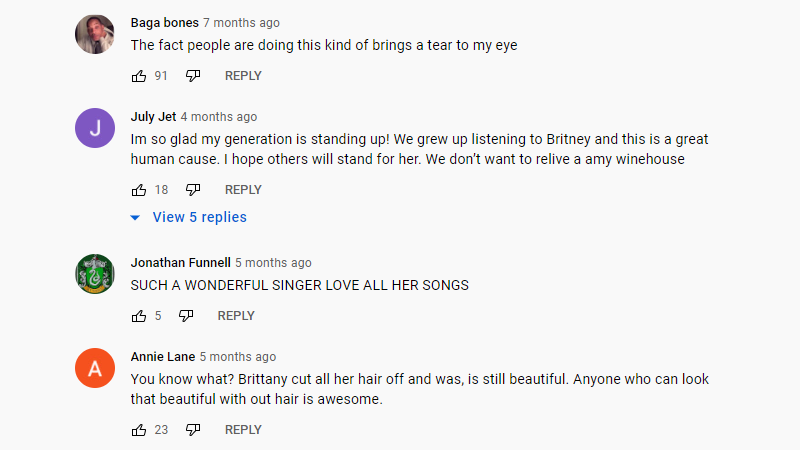
HULLFISH: Talk to me a little bit about structure. Were you trying to get to a certain topic by a certain time? Were there structural things that you felt were markers that you had to hit?
O’BRIEN: Not by the minute, and honestly, it kept moving around. We did keep shifting the idea of when that conservatorship story would come in like now it’s at the very beginning, but it was not always there. We needed to make sure that people understood why this story was relevant.
We really wanted to make sure we got to the investigative part of the story without shortchanging her early years, but we knew that was a story that people had seen before, so we wanted to get through it as quickly as possible.
TAKAL: There were a lot of discussions in terms of how much backstory do you want? There was a feeling of not wanting it to be the familiar Behind the Music or anything, and I think it turned away from that very early. You start realizing this is not about her life.
With the Star Search archival clip—when Ed McMahon asks if she’s got boyfriends and can he be her boyfriend—you realize this all started early, and it’s not going to be that kind of film. I think that already gets you step-by-step to the conservatorship; even though it’s the halfway mark, when you get to it, you understand a little bit more.
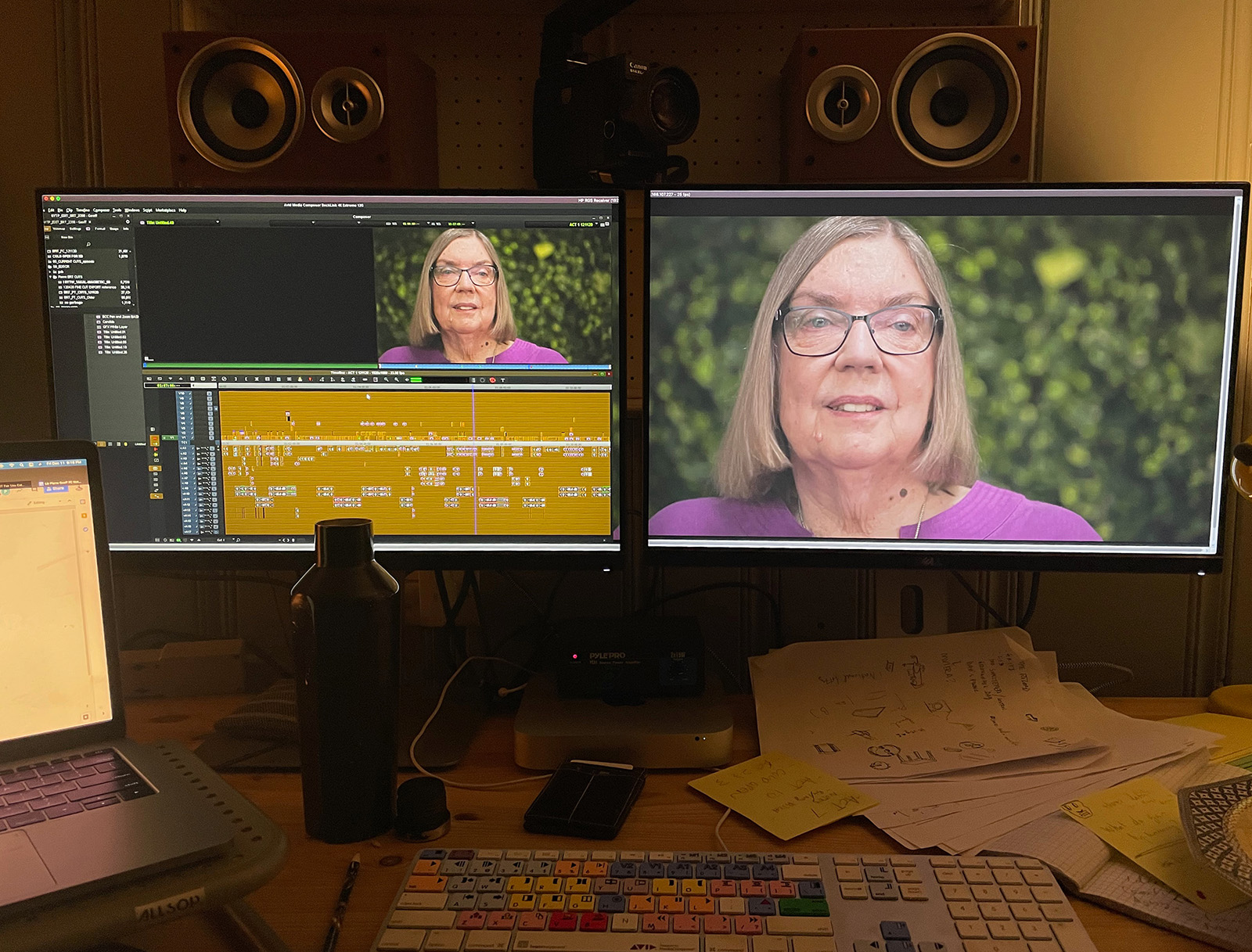
O’BRIEN: There was a point in time where we had segments about her discography and recording Toxic and other big moments at specific times, but we realized that what we really need to know is how she got on the map. We don’t need to know every record she ever recorded and how everybody feels about every song. We are going to hit that nostalgia quickly so that you’re in that mindset, and then we can tell you the things that you maybe didn’t realize were happening.
HULLFISH: You mentioned that the structure changed from something else to what we got. Did you not initially start with the Free Britney people?
O’BRIEN: Initially, the first thing was that Family Feud clip; it was a quick way for us to get the point across …”Wow, we were terrible to this poor woman.”
Wow, we were terrible to this poor woman.
HULLFISH: Let’s talk about the structure of acts in documentaries with and without commercial breaks.
TAKAL: It’s interesting because we are still rooted in network television that inserts commercials to interrupt things, and yet I’m sure a lot of people watch this uninterrupted.
HULLFISH: Commercials are still part of the editing, right? Without the commercials, that flow is completely blown.
O’BRIEN: I was watching one of the episodes of The Weekly that I had worked on; I cut the picture right up until it hit the commercial, and I was like, man, this really is so jarring. I forgot that there were commercials in front of this stuff, so now, I make sure that I put in a good second to two seconds of black because that buffer, to me, is very important for the viewer before they get bombarded with a very loud commercial.
HULLFISH: Can you remember some of the things that were still in the documentary at a fairly late stage that eventually you said, “I know this is an interesting point, and we’ve had it in there for six months but let’s get rid of it.”
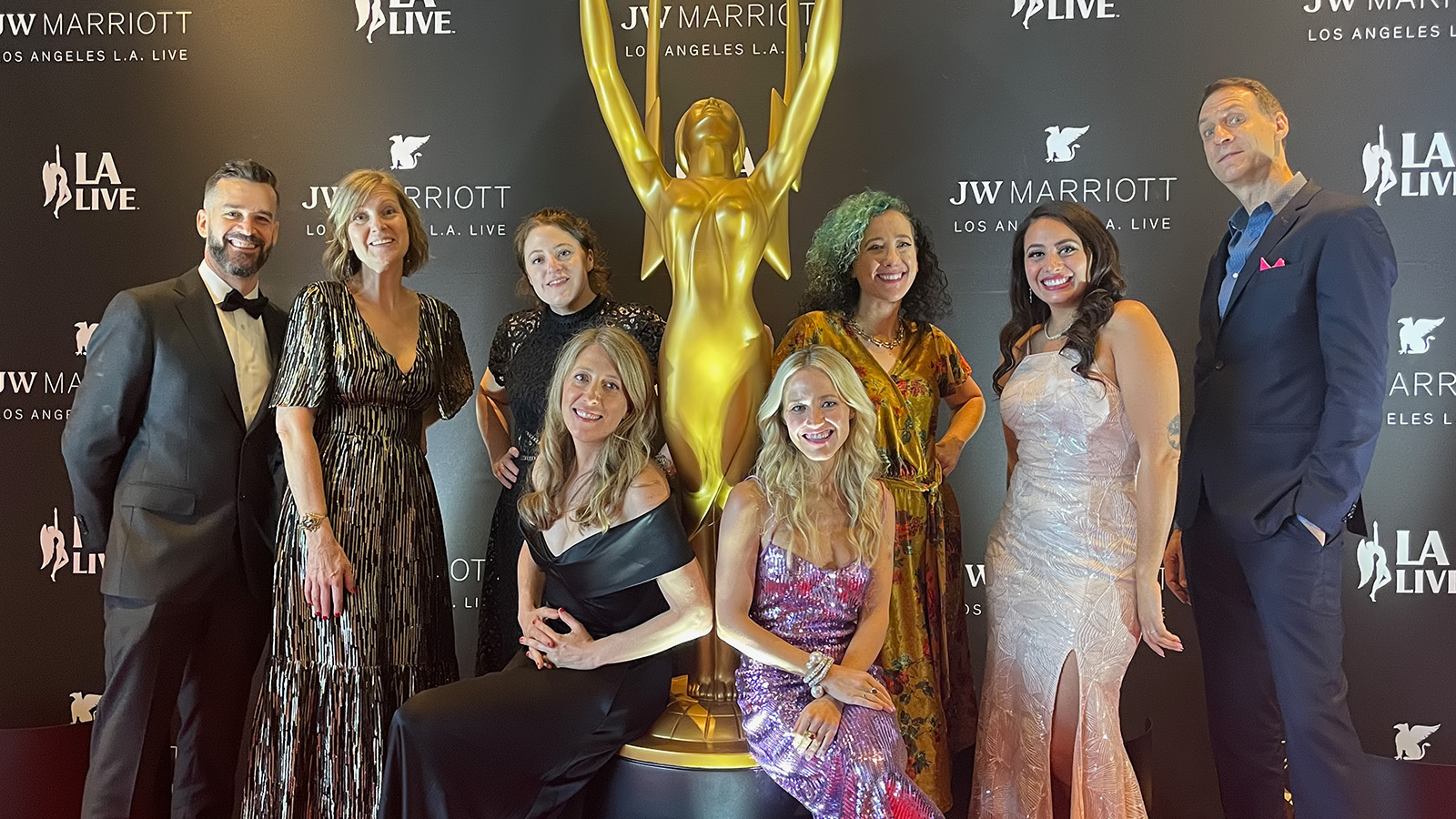
TAKAL: I remember a back and forth about the Instagram account. Sam Stark, the director, wanted that to be a section, and she really wanted that to be poetic and have its own mood. So I remember that growing in size and shrinking in size over and over again, so there was this “accordion” of that one particular section, and I think it finally ended up the way Sam wanted it.
O’BRIEN: One of the things about Britney Spears is that she is a huge advocate for gay rights and the gay community, and we did have a whole section leading into the pre-Kevin Federline era. She did a surprise show in New York, and one of them was at a gay club. They all went crazy, it was a very nice section of the film that sort of humanized her and showed her empathy and put her fandom in a very sincere place, but it was one of the things that ultimately had to go just cause we didn’t have enough time.
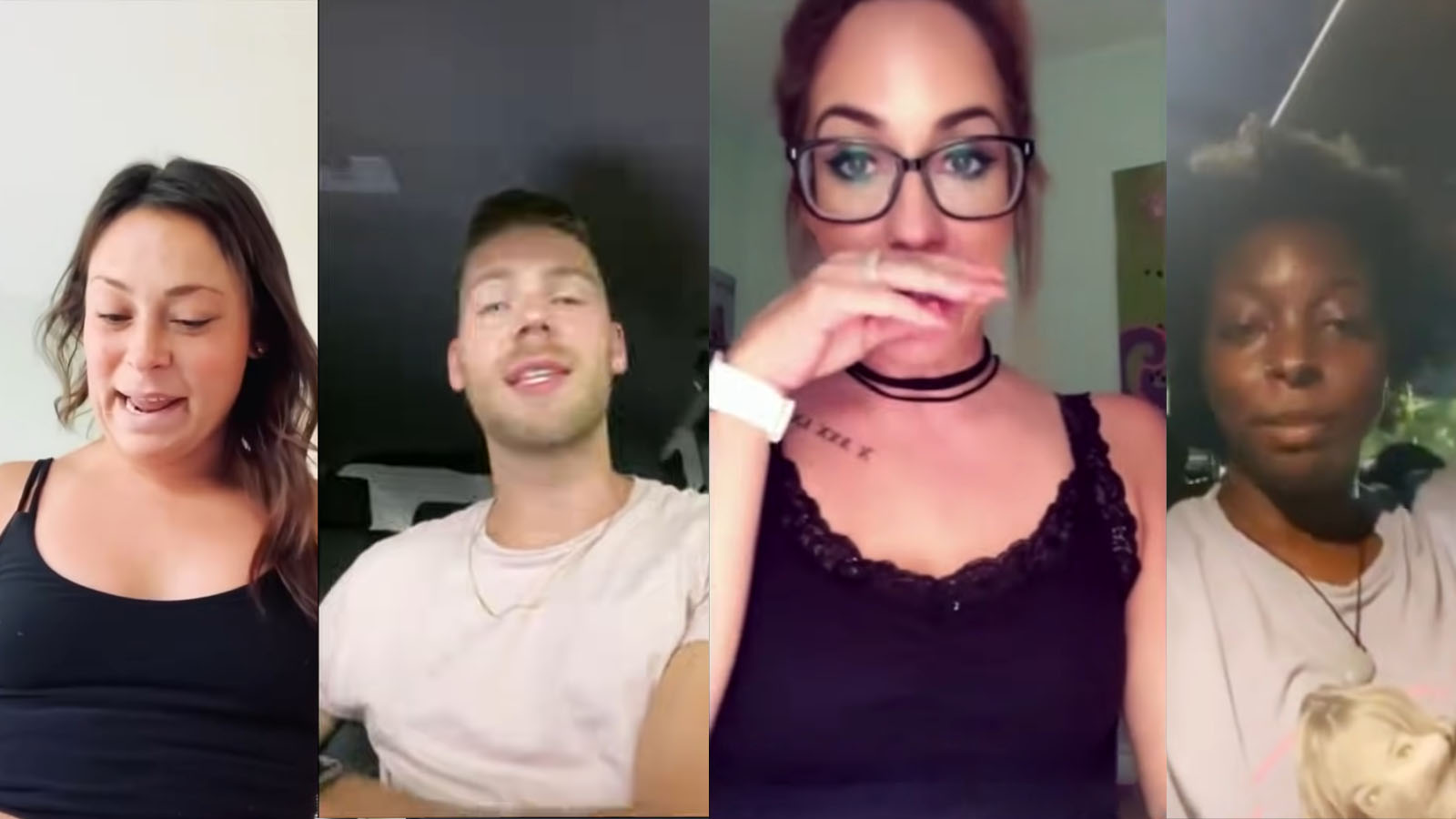
There was a point in the film too, where the Free Britney fans were threaded throughout in a way where we would meet them in the beginning, and then they would come in at certain points, but ultimately that stuff came out because we knew that we only had 74 or 75 minutes, so everything is fighting for real estate.
HULLFISH: Did you guys cut this during COVID?
O’BRIEN: Yeah, still cutting in my basement.
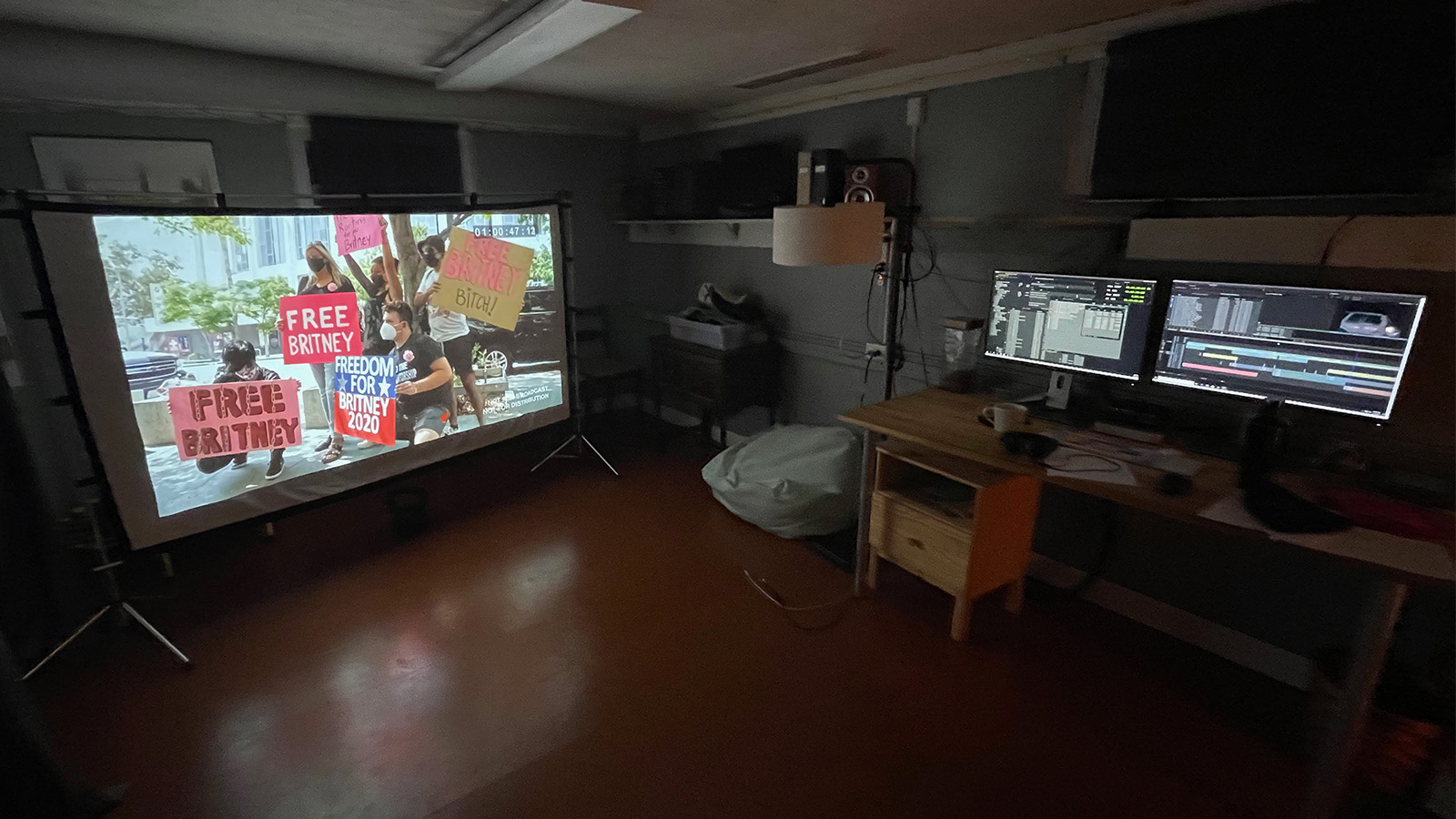
TAKAL: It’s kind of funny because it was very seamless. We were on the series, and we went from one day on set to the next day being remote. We worked out of our homes anyway, so it was simple.
O’BRIEN: The way that the production company set it up as we had a VPN into a system that was just at the office in Manhattan. So I’m remoting into my Avid that’s in my office.
HULLFISH: So you literally don’t have Avid or the storage on your computer?
TAKAL: Exactly, It’s funny because, in the beginning, people were sitting in our edit rooms, watching us click our mice and watching the timeline on our monitors, but that quickly went away.
Now we’re just in a rack. We are literally just servers in a rack, no more screens. And when we have tech issues, there’s an incredible team. They deserve so much recognition because as soon as there’s an issue, they can remote-in to our system at home and resolve the issues.
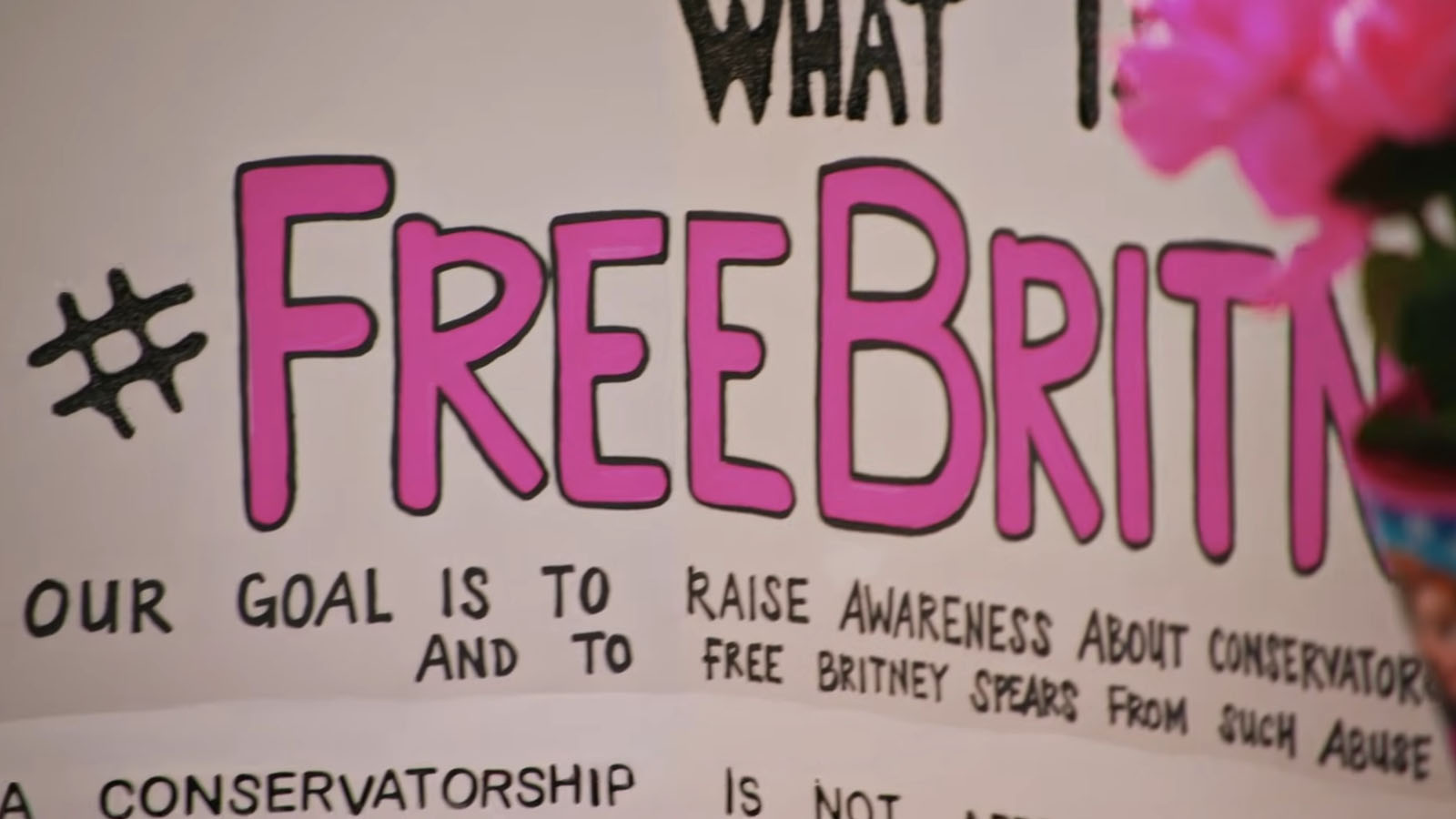
O’BRIEN: It was pretty seamless. To be honest, I had never worked like this before, and they’ve evolved the system, and it’s gotten much better than even when we first started. I sometimes forget that I’m not actually controlling the Avid in front of me.
I would say the only thing that’s missing for me is walking down the hall and seeing somebody; you pull them in, ask them for a second pair of eyes, or if this cut makes sense. I miss getting that sort of feedback from an editor who isn’t necessarily involved in the project but can watch a scene. Either they’re confused, or they get it. It makes sense, or it doesn’t, and maybe they’ll have an idea on how to change it. So I do miss that a little bit.
HULLFISH: Did you find that there was footage that you wanted, that you needed to find, or wish you had specifically for certain scenes?
O’BRIEN: Yeah, especially when you’re listening to these interviews where they mentioned a thing that we don’t have.
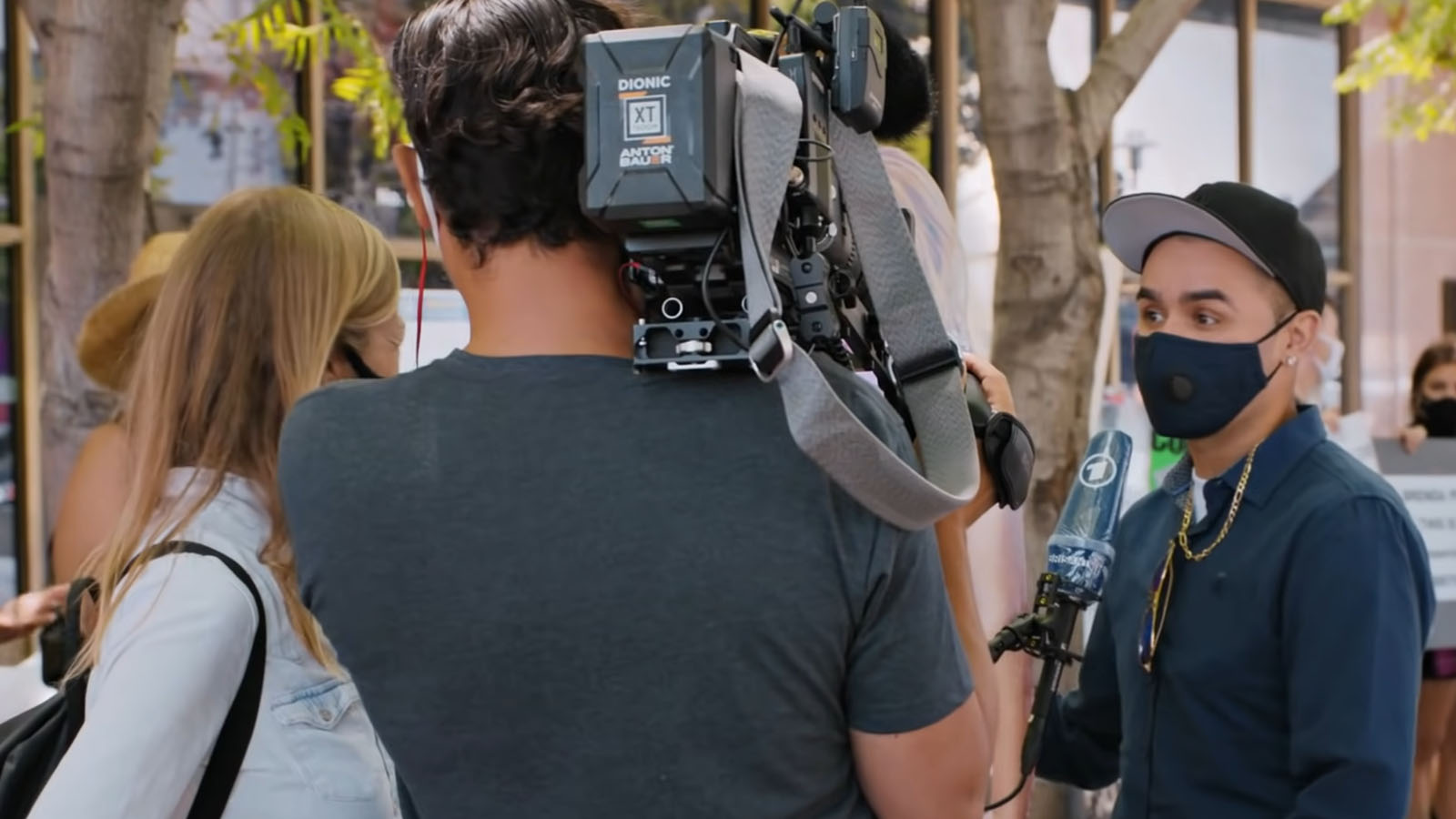
HULLFISH: So you have an archivist, correct?
O’BRIEN: Yes. Johanna Schiller worked tirelessly and still works for us tirelessly to find all of these things. She would go down her own rabbit hole, and I think she even found that Bryan Spears clip of him on some podcast which was an amazing find. It was absolutely incredible the stuff that she would find. It was obscure stuff like Britney Spears in Sweden or some other random country. Wherever those lesser-known international clips and interviews.
She found this one awful clip from some international television show, and the host asks her about her breasts. It’s widely covered in the United States, but it’s a terrible clip that we wanted to make sure people saw.
TAKAL: There was so much archival. I can’t say that I know it all because there were hundreds of bins and within the bins 50 or more clips. So sometimes you would click on something, and there would be this inspiration coming from a clip we can use, but we don’t have to see; we can just use the audio and build an atmosphere with it.
HULLFISH: How did you organize all of that archival media?
TAKAL: They were organized by theme. They were organized by date. There would rarely be a piece of archive in two different places.
I would have to consult with Johanna often because there was just so much.
O’BRIEN: It was labeled something like “Paparazzi,” but then it was in subcategories like “Paparazzi 2001, 2000, 2003” because we needed to make sure we wouldn’t be jumping all over in time. For every theme, there was also a chronology to that theme, whether it was performances or paparazzi, or television appearance, and for everything that made it into the documentary, there are probably three times as much that didn’t.
Coming along, folks … coming along 🖕🏻!!!!! New with real representation today … I feel GRATITUDE and BLESSED !!!! Thank you to my fans who are supporting me … You have no idea what it means to me be supported by such awesome fans !!!! God bless you all !!!!! pic.twitter.com/27yexZ5O8J
— Britney Spears 🌹🚀 (@britneyspears) July 15, 2021
HULLFISH: Thank you so much for your time today. It’s been really interesting chatting, and congratulations on your nomination.
O’BRIEN: Thank you very much
TAKAL: I appreciate it. Thank you.

